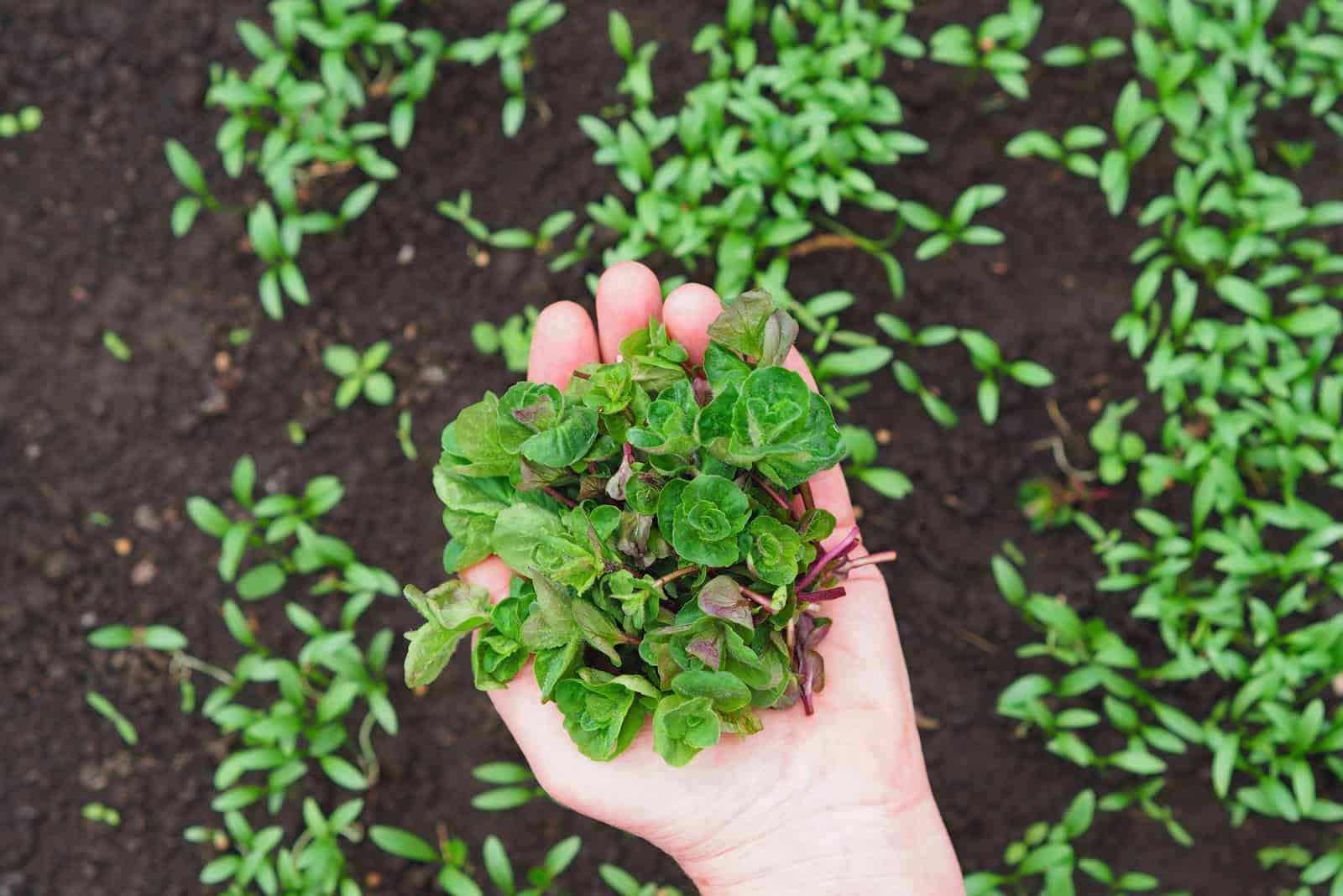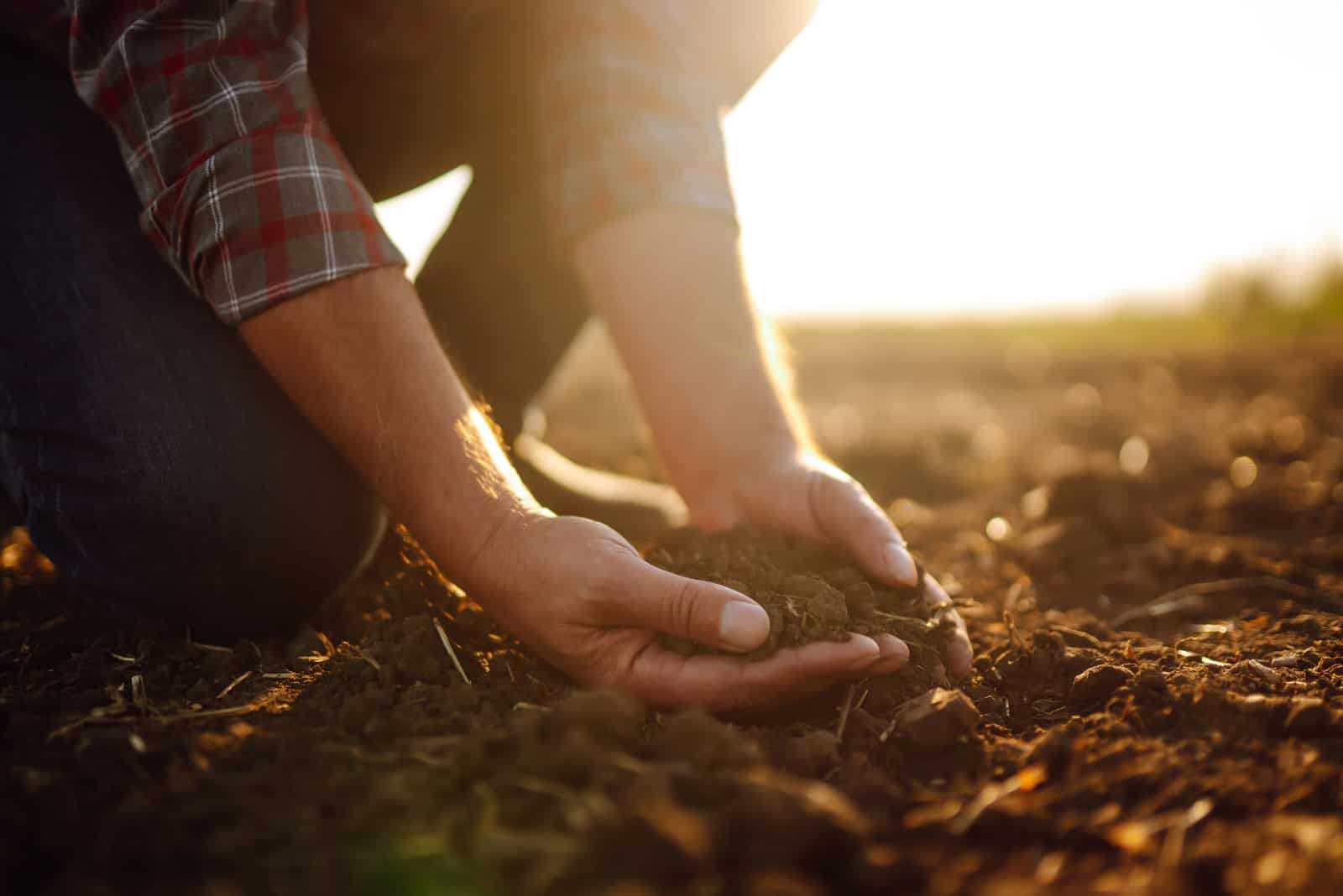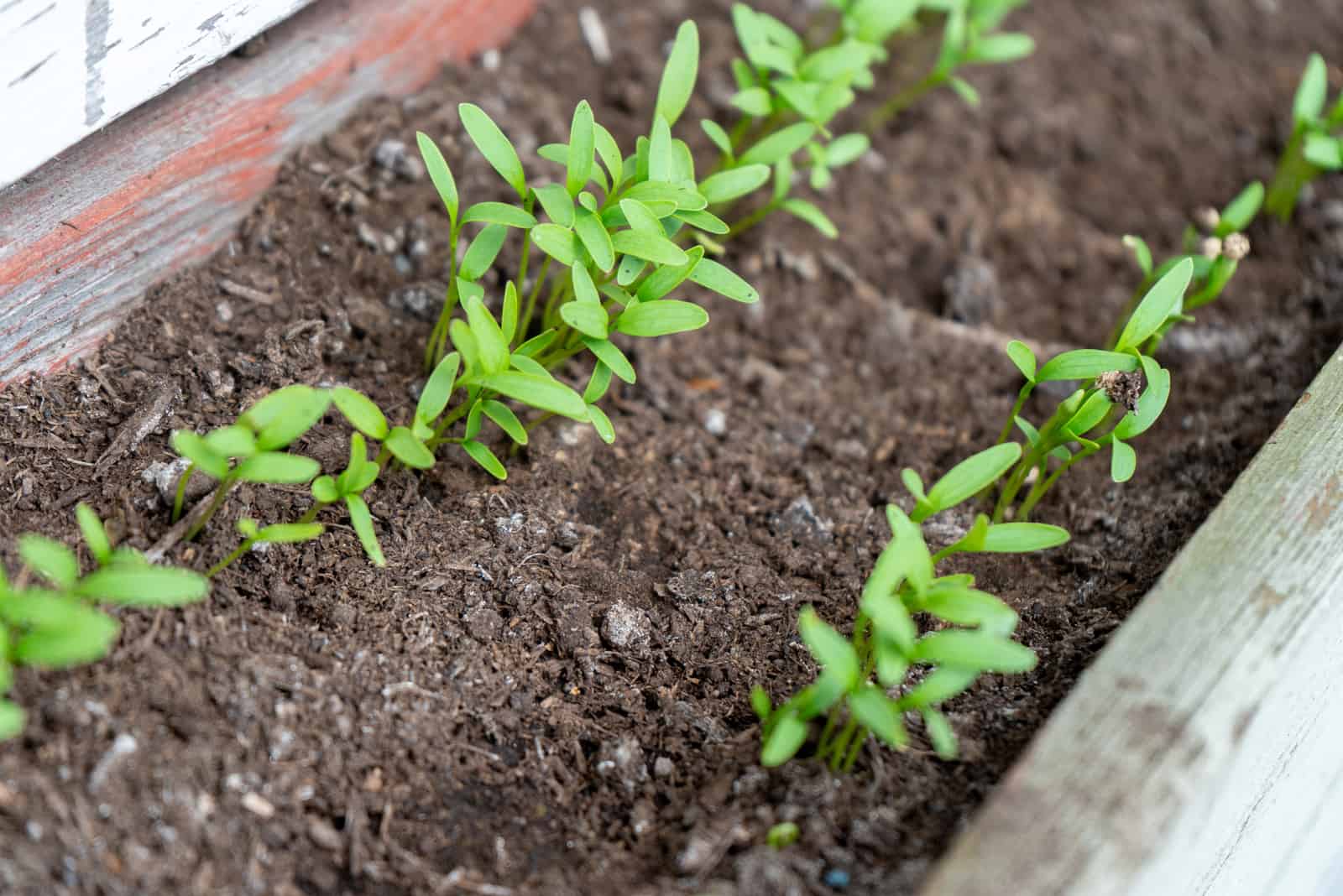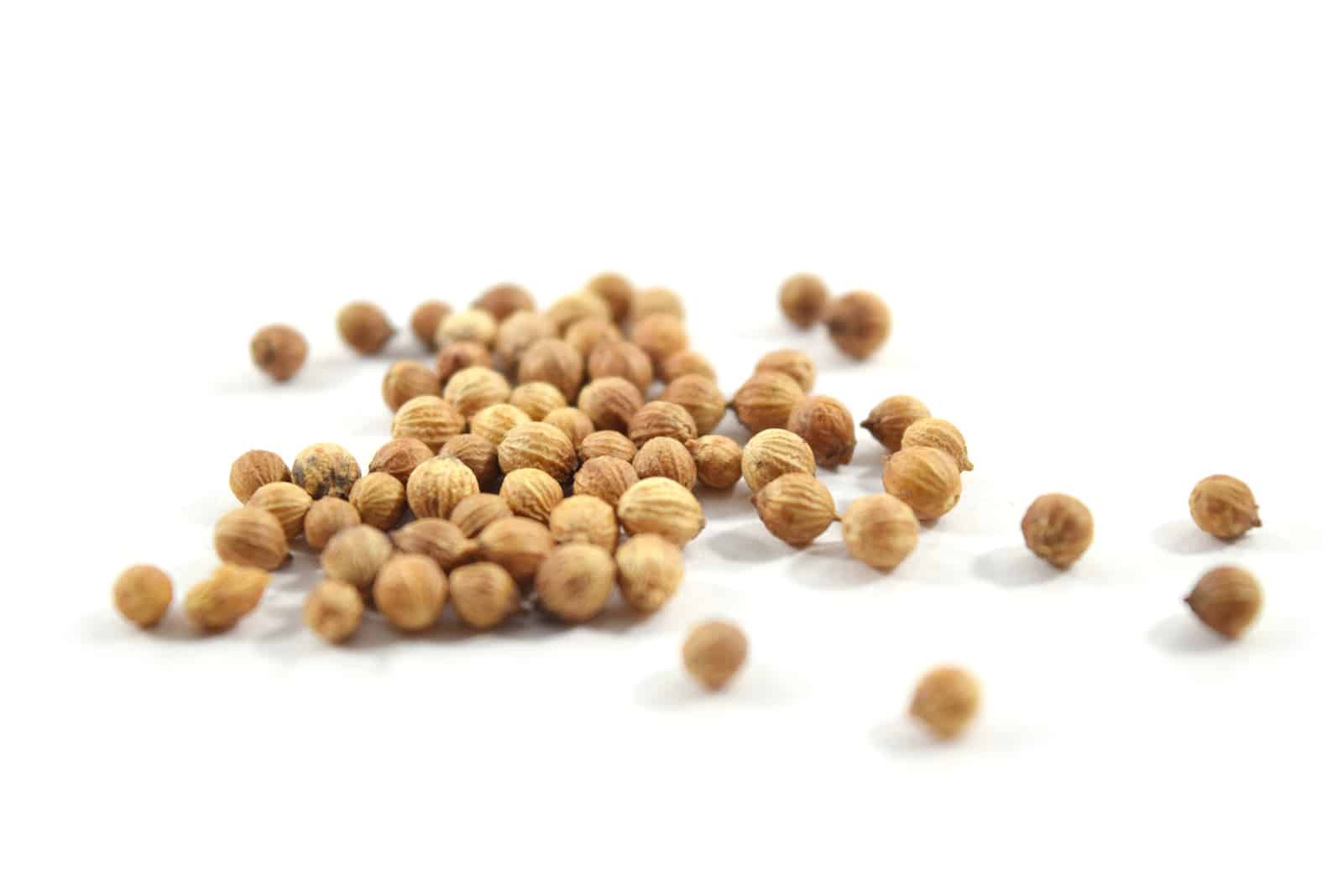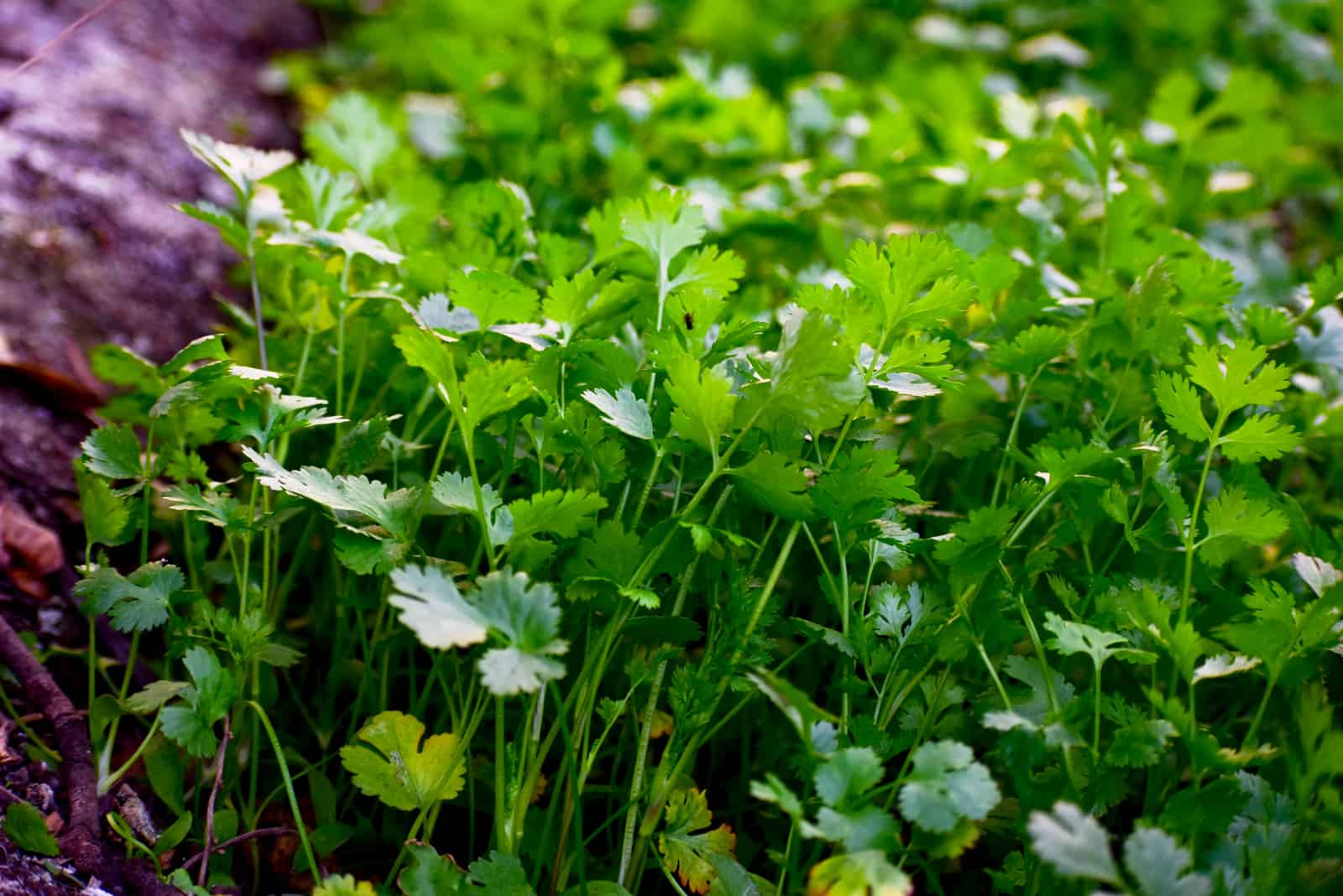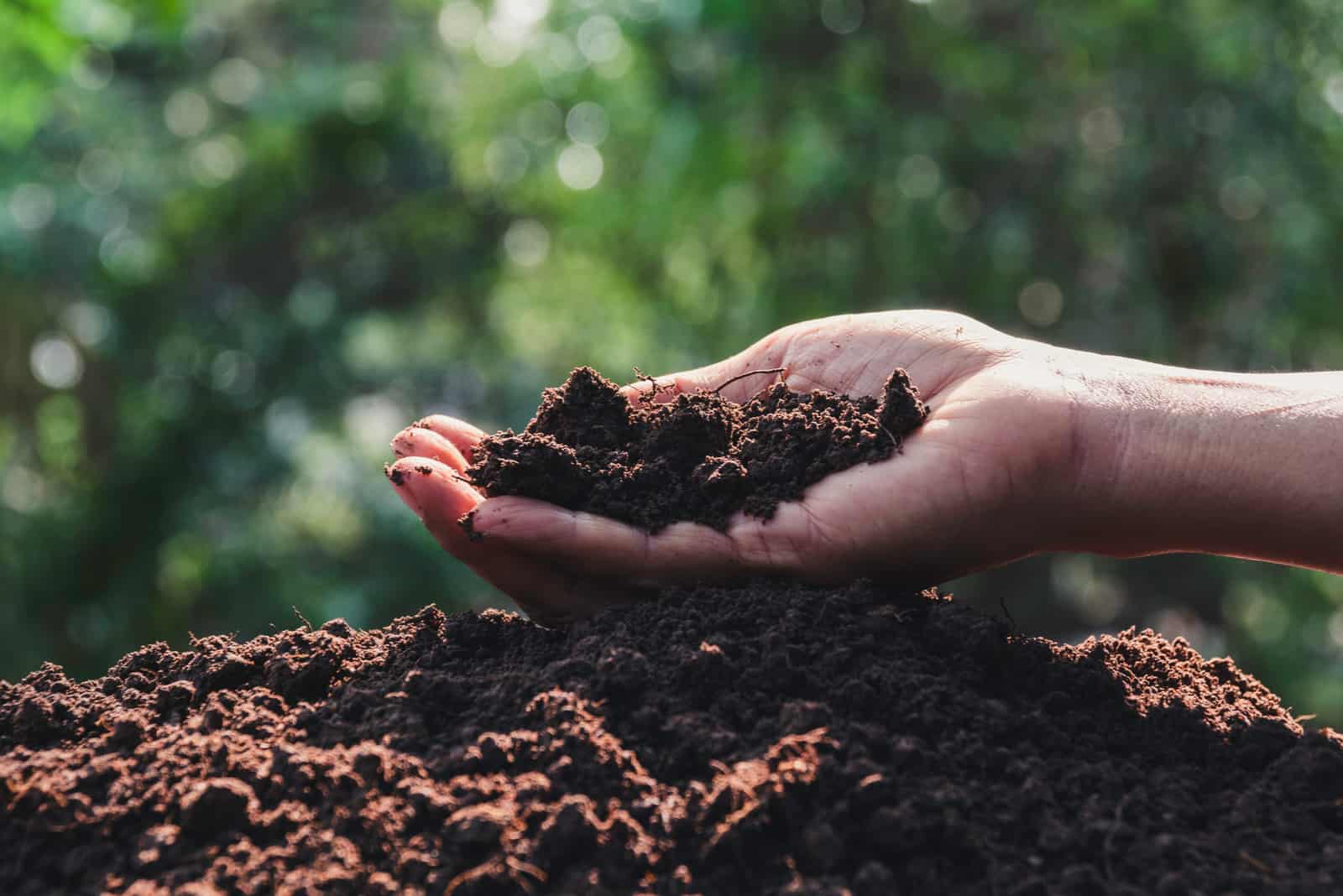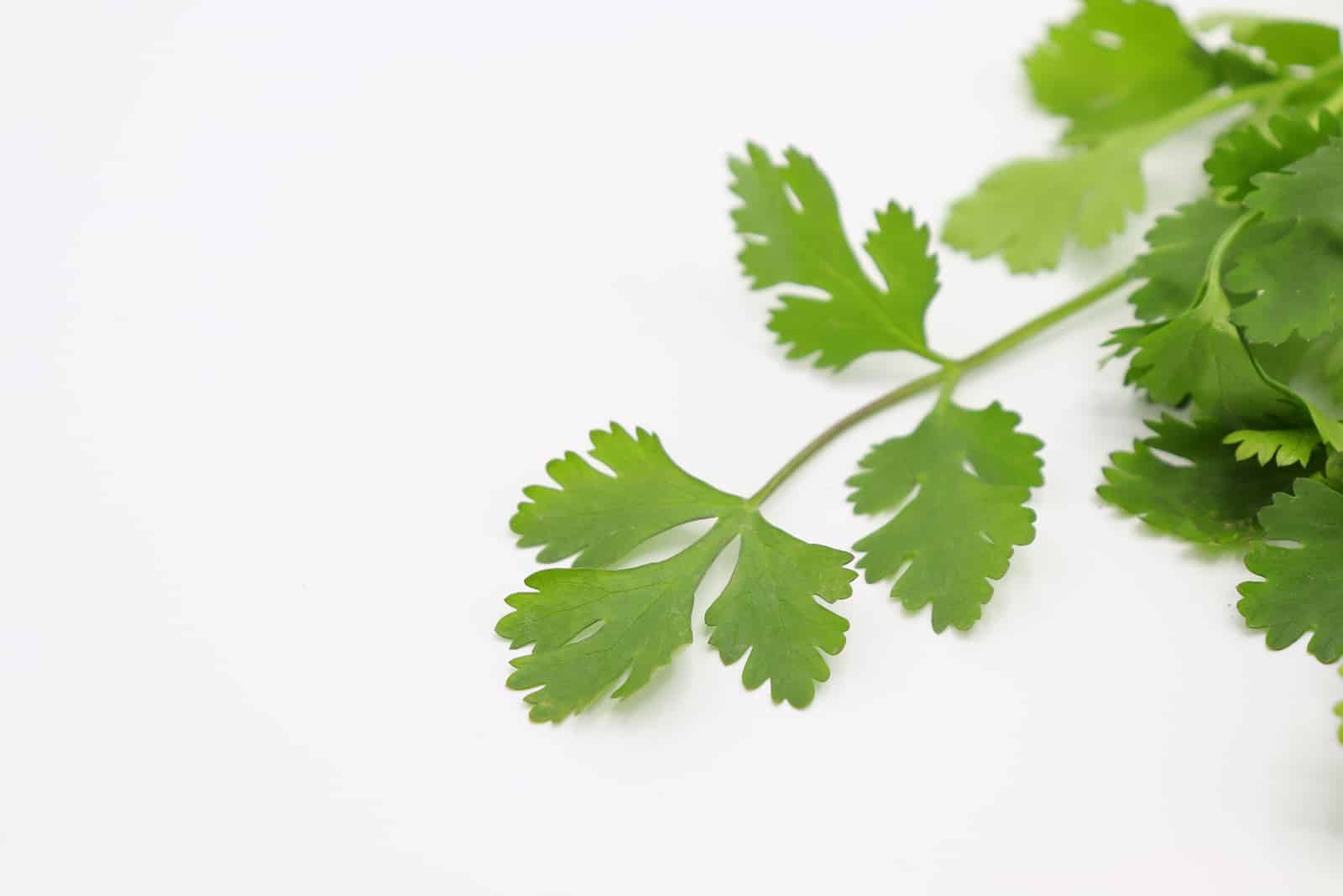Positive Bloom is an Amazon Associate and we earn from qualifying purchases through these links at no extra cost to you.
Cilantro is a herb that you’ll want to put in every dish once you try it. To help you grow your own cilantro, we wrote this article about growing and caring for cilantro sprouts!
Before we start, let’s look at some general information about the cilantro plant:
[table id=162 /]
Growing cilantro is not difficult, but this step-by-step guide will ensure there’s no room for error.
You will also find detailed information about the cilantro growing stages so you can properly monitor the process and tend to this herb’s needs.
Finally, you’ll find detailed guidelines for taking care of this plant, as well as a few fun facts along the way.
Let’s begin!
The 8 Steps For Growing Cilantro Sprouts
Cilantro is fast-growing, so you may be able to start spicing up your dishes with this herb sooner than you thought! However, knowing exactly how to grow cilantro microgreens is important as this plant is delicate and needs lots of attention.
But, don’t be afraid! The first stages are crucial, but you simply have to keep the soil moist, which isn’t much of a problem.
Knowing precisely when to plant, water, and give this herb light is the most important thing, and in this section, you’ll learn just that!
1. Choose The Best Time For Planting
You can grow cilantro either in a container or in an outdoor garden, but wherever you plant it, choosing the right time to do so is essential.
This plant is a cool-weather crop, and as such should be planted in spring or fall when all danger of frost has passed.
If you are planning to grow cilantro indoors, you can plant it earlier in the spring and then transplant it outside when the weather is a bit warmer. That said, you don’t have to transplant this herb if you don’t want to, as it will be perfectly fine if grown in a container.
However, cilantro doesn’t do well in summer temperatures, and even slow-bolt cilantro can start producing flowers prematurely and spoil the flavor. If you plant in summer, you might be able to harvest some leaves, but the biggest yields are in spring or fall so time the planting accordingly.
2. Prepare The Soil
Fill the entire planting tray with a well-draining potting mix and press it down to compact it a bit. The tray should have bottom holes so excess water can drain quickly and the plant can be watered from the bottom.
If you’re planting outside, you should add some compost to the garden soil to improve drainage and enrich the soil with nutrients.
After that, spray the soil with chlorine-free water. If you’re using tap water, you can fill the bottle and leave it overnight so the chlorine can evaporate.
Spray the surface a couple of times, and if you see any indentations, smooth them with your fingers.
3. Sow The Seeds
The next stage is planting the seeds. Some people soak them in water before planting, but there aren’t many benefits of doing this. One thing you should be careful about is spacing.
Arrange the seeds on top of the soil, but don’t clump them all together. Your hands are your best tool at this stage, so put them to use!
Spread the seeds, gently press them down, and cover them with soil.
If you have decided to try the soaking method, put the cilantro seeds in chlorine-free water for 12-24 hours, remove them, put them on the soil, and spread them around with your hands.
Some people also put the seeds in a plastic bag and crush the hulls with a rolling pin to make them germinate faster. However, you can simply place dry, uncrushed seeds on the soil and they will still germinate.
It’s completely up to you!
4. Prepare The Seeds For Germination
The next step is to prepare the dry seeds for germination, but don’t worry, it’s not rocket science! You just have to mist them with water, but be careful not to spray them off the soil.
Place the container in a water tray (one without holes), such as the one below.
[lasso id=”3372″ link_id=”1898″ ref=”amzn-10-pack-strong-plant-growing-trays-extra-strength-durable-black-plastic-growing-trays-without-drain-holes-for-greenhouse-and-flowers-wheatgrass-sprouting-plants-growing”]
Put the lid over the seeds, and if it’s transparent you can place a cloth or a tea towel over them to keep the light away.
Cilantro doesn’t like higher temperatures, unlike some other plants, so you shouldn’t place it directly on the heat mat.
You can stack up containers with different plants so the cilantro container is on top of another potted plant that you’re germinating.
5. Monitor The Growth
After you’re done with the last part, just leave the seeds as they are for two or three days. They don’t need any additional moisture as the lid saves water, so you only need to monitor the growth.
After 2-3 days, you can spray the plants inside the container and you should start seeing some seeds germinating. After day 4, most of the seeds should germinate, but some seeds need more time. You’ll probably see their germination after 2-3 days.
If germination is proceeding nicely and you can already see many cilantro seedlings, remove the lid to give your new cilantro plant some light.
However, if the seedlings look weak and small, you should let them germinate under the lid a few days longer.
6. Let There Be Light
Once you’re happy with their progress, you can uncover the seedlings and give them plenty of sunlight. However, if all your south-facing window sills are occupied, you can try using grow lights. I recommend these:
[lasso id=”3146″ link_id=”1899″ ref=”amzn-aerogarden-45w-led-grow-light-panel-black”]
You should spray the soil if you notice that it looks dry, but don’t otherwise.
7. Water The Sprouts
The following step involves watering the sprouts for the first time, and we prefer to water them from the bottom.
Fill the watering tray with a 1/4 inch of water and leave the plant to absorb it. There is nothing wrong with watering from the top, but watering from the bottom keeps the leaves and stems dry and reduces the possibility of fungal diseases.
The first time you water the new seedlings you might need to add more water because the growing medium is mostly dry, but after that, a quarter inch works just fine.
You should check the planting substrate every two days to see whether it needs water, but it mostly depends on humidity and air circulation.
Thankfully, you don’t have to memorize all the steps. Simply watch the video below to find out everything you need to know!
8. Harvest The Leaves
The last stage is harvesting the leaves, and this usually takes a month if the growing conditions are ideal.
The important thing is to wait until the first true leaves are formed, so don’t let the cotyledon stage fool you.
When the plant is still young, you should harvest small amounts. As it gets established, you can use a sharp knife to cut more stems that you can save for later.
Knowing how to harvest cilantro without killing the plant is crucial if you want to have a large yield!
If you harvest large amounts of cilantro, you can keep them in water or refrigerate them to maintain their freshness. You can also place dry cilantro leaves between paper towels and put them in an airtight container to keep them fresh 5-10 days longer.
The 8 Stages Of The Cilantro Growth Cycle
Now you know how to grow your own cilantro from seeds, it’s time to look into its growth cycle. You may not think it’s important, but learning about the different stages of a plants’ growth cycle is what differentiates experts from beginners!
In this section, we’ll look into the cilantro growth cycle more deeply so you can distinguish between the different phases. This will help you decide when to water the plants and give them light, etc.
1. Planting
Planting cilantro is easy – you simply have to pick the time you want to do it. As cilantro is a cool-weather annual crop, you should consider starting it after the last frost date if you live in a climate with freezing winters and mild summers.
However, if you live in a region that experiences scorching summers and mild winters, you should plant your cilantro in late summer or early fall. The heat can cause cilantro to bolt and turn its leaves bitter, so you should do everything you can to avoid it.
Plant the seeds in a pot with drainage holes filled with well-draining soil. Then, mist it with water.
You can also start the cilantro seeds indoors and then transplant them outside. If you choose to do this, you should plant them six weeks before the last frost and only transplant them when the danger of frost has passed.
2. Seed Germination
After 2-3 days, you should already start noticing the seeds germinating, and they should all be done in about a week. The optimal soil temperature for germination is 60°F (15°C).
If you’re starting this herb outdoors, you should sow them in rows half an inch (1.3 cm) deep and 12 inches (30 cm) apart to improve air circulation and allow the leaves to branch out.
3. Sprouting
The next stage is sprouting, which is when you see the first shoot breaking from the seed. The sprout looks for the sun, and the plant invests all its energy into growing new leaves.
4. Plant Growth
In the following stage, the plant focuses on vegetative growth and development of the first true leaves.
After their formation, the plant’s growth quickens as there are more leaves to photosynthesize and produce the necessary food and energy.
5. Harvesting
After the first set of true leaves is formed, you can start harvesting your cilantro. However, keep in mind that the plant is vulnerable at this time, so you shouldn’t take too much.
After the harvest, however, the plant will start growing more vigorously and you will notice it becoming bushier. You should harvest the plant once a week at this point if you want to get the best from it.
Frequent harvesting delays flowering, so you will have plenty of cilantro leaves before blooming makes them bitter.
6. Flower Production
As the temperature gets higher, it becomes more difficult to delay flowering, and once cilantro flowers, you can’t do anything to restore it to the previous stage.
However, if you don’t want to deal with flowering cilantro you can simply harvest the entire plant right before it bolts.
Bear in mind that flowers aren’t a bad thing. They are the first stage of seed production.
You can use these seeds for the next year or dry them and use them in cooking. These cilantro seeds are known as coriander.
7. Seed Formation
Cilantro flowers need to be pollinated in order to form seeds, and that’s where our friends from the insect world come in quite handy!
After the seeds have formed, you can collect them and save them for the next year.
8. Senescence
After the flowers produce seeds, the plant’s life cycle has come full circle and it stops growing. This stage is known as senescence, and the plant slowly dies away as it has spent all its resources on seed production.
However, this stage marks the beginning of another cycle that you can start all over by planting the seeds your herb produced.
The Benefits Of Cilantro Sprouts
Cilantro has many positive effects for your health, and cilantro microgreens are extremely rich in beta carotene and lutein, important nutrients that improve vision, are good for skin, and help fight cancer.
It also contains large amounts of vitamin K, which helps with blood coagulation, and vitamin E that boosts your immune system.
Cilantro Care Guide
Cilantro is a spice regularly used in Mexican, Asian, and Mediterranean cuisine. It goes well with shrimp and chicken, and don’t even get me started on cilantro-radish salad!
This is why I recommend growing your own cilantro, so you can have it available all the time!
This section contains growing instructions for cilantro in terms of lighting, watering, soil type, and more.
There are certain things you always need to keep in mind, but the most important are that this herb requires plenty of light, and a moist, well-draining growing medium.
Lighting
Cilantro sprouts need full sun to flourish, which means they should be exposed to sunlight for at least 6-8 hours a day.
If you’re growing cilantro indoors, you should place the container on a south-facing windowsill, or invest in some grow lights if you don’t have access to well-lit windows.
On the other hand, if you prefer growing cilantro outside, you need to pick a spot that gets plenty of sunlight during the day.
However, if you live in a hotter climate, your cilantro plant would be better off with some shade, as too much sunlight and heat can lead to premature flowering.
Plant this herb somewhere east-facing so it can bask in the morning sun and avoid the scorching afternoon sun rays.
Water And Humidity
This herb loves moisture, so you should water it every couple of days to keep the soil moist. Generally, this plant needs about an inch (2.5 cm) of water a week, but if the temperatures are higher you should water it more, especially if you are growing it in a pot.
Cilantro leaves need plenty of water, but don’t overdo it as it can lead to root rot, which can kill your plant.
Humidity
Cilantro can handle average household humidity quite well, but it truly flourishes when the humidity is higher.
However, there’s no need to buy a humidifier as you can simply mist this plant once a day to keep it strong and healthy.
Again, don’t overdo it! Too much moisture on the leaves can lead to powdery mildew, causing you more problems than the slightly slower growth you get with average humidity.
Temperature
Cilantro can tolerate a broad range of temperatures. It can grow in temperatures between 50 and 85°F (10-29°C). However, this plant prefers temperatures around 70°F (21°C) for the fastest growth.
An interesting thing about cilantro is that it can survive when the temperatures drop down to 10°F (-12 °C), and yet temperatures slightly higher than 85°F (29°C) immediately make it bolt.
Soil And Fertilizer
All cilantro requires from the soil is for it to be fertile and well-draining. For that reason, we often amend our potting soils with vermiculite and coconut coir to improve drainage, yet maintain soil moisture at the right level.
You can also add compost or earthworm castings to the soil to help improve growth.
Finally, if you grow cilantro outside, you should consider mulching it so that the heat doesn’t cause premature blooming and ruin the signature cilantro flavor.
Fertilizer
Cilantro doesn’t need to be fertilized too often. Feeding it once or twice during its growing season is ideal.
You should use a water-soluble nitrogen-based fertilizer, and never use more than a quarter of a cup (61.5 ml) per 25 sq ft (2.3 sq m) of growing area.
You can also try using organic fertilizers to help your plant in a safer way.
Just be careful of over-fertilization as it can lead to discolored leaves, drooping plants, and eventually death.
Transplant
Cilantro has deep roots, so it doesn’t transplant that well, but if you still want to grow it outside you can do a couple of things to alleviate transplant shock.
You need to move this plant to a similar planting substrate, so make sure the garden soil is fertile and well-draining.
Transplant the seedling in colder weather as it can help it adjust to the new soil more quickly. A cloudy day when the direct sunlight cannot hurt it would be ideal.
This video will help you transplant your cilantro without any lasting effects.
Common Issues
Unfortunately, cilantro is not resistant to pests and diseases, so don’t be surprised if you notice aphids and beet armyworms parading on your plant.
Powdery mildew, botrytis blight, and soft rot are the most common diseases that attack this herb. They mainly infect outdoor crops, but they can affect indoor-grown cilantro.
This section will discuss some of the most common pests and diseases you’ll have to deal with if growing cilantro microgreens, as well as some tips for treating them.
Pests
Some of the most common pests that attack cilantro are aphids and worms.
Aphids are tiny green, red, or peach-colored bugs that feed on the lower parts of cilantro leaves. There are various ways to get rid of them, and if you’re not a fan of chemicals, you can introduce beetles and ladybugs, which are their natural enemies.
You can also handpick them, but if that seems like a drag, you can always turn to insecticides like the one below:
[lasso id=”3373″ link_id=”1900″ ref=”amzn-ecogarden-organic-pesticide-4-oz”]
Worms come in all shapes and sizes, and they usually attack the roots and leaves of cilantro plants. You can control them by removing weeds, picking them, or even placing a barrier around your cilantro so that they can’t get to it.
Diseases
The most common diseases that afflict this herb are powdery mildew, leaf spot, and botrytis blight.
Powdery Mildew
Powdery mildew is a fungal disease that develops in warm and humid conditions. If you don’t leave enough space between your plants or overwater them, a white layer on top of the leaves may appear.
You can prevent this by exposing your plants to enough sunlight, watering from the bottom so that the leaves don’t get wet, and improving the air circulation around the plants by spacing them.
However, if your plants are already infected, you should separate them and spray them with a baking soda and water solution, or a fungicide if that’s your preference.
Botrytis Blight
This is another fungal disease caused by improper air circulation. However, it is more dangerous and leads to the rotting of stems and leaves. You can recognize it by the gray mold which appears on the leaves and stems.
You should isolate the cilantro from the rest, remove the infected parts, and increase air circulation to keep your plants healthy.
Leaf Spot
Leaf spot is a bacterial, fungal, or viral disease, and its treatment depends on which type you’re dealing with. Fungal leaf spot is caused by excessive moisture on the leaves, and it can be treated with fungicides.
Bacterial leaf spot is caused by bacteria found in seeds or water, so you shouldn’t plant infected seeds and never allow water to touch the leaves if possible.
FAQ
Here are some answers to the most common questions about cilantro!
Check out this additional information about cilantro sprouts!
Can you eat cilantro sprouts?
Yes, cilantro sprouts are safe to eat. In fact, they have more benefits than cilantro, their flavor adds a note of freshness to your dishes, and you can use it as either a garnish or an ingredient.
Do cilantro microgreens taste like cilantro?
Yes, cilantro microgreens taste exactly like cilantro. However, you should wait until the first true leaves appear before harvesting them as you won’t gain much from eating cotyledons.
What is the nutritional value of cilantro microgreens?
The nutritional value of cilantro microgreens per 100g is:
• Calories: 23 kcal
• Carbs: 3.67 g
• Protein: 2.13 g
• Fat: 0.052 g
Cilantro sprouts contain vitamins A, C, E, and K, and they are rich in minerals such as iron, manganese, magnesium, and calcium. They also contain folates, niacin, riboflavin, and beta carotene, which all contribute to your overall health.
To Wrap Up
Cilantro sprouts are incredibly healthy and delicious, so we brought you some tips and tricks to help you grow them.
We also discussed the cilantro growing stages so you can monitor the growth of your plant and care for it accordingly.
Our care guide contains all the crucial facts for growing cilantro so you know exactly how much sunlight, water, and fertilizer it needs, as well as what temperature and soil it prefers.
Finally, knowledge about the most common pests and diseases that afflict this herb prepares you for the unexpected, so you now know that you don’t have to panic if the worst happens.
Simply apply what you’ve learned and save your herbs!
Good luck, and until next time!
Like this post? Share or pin it for later!

